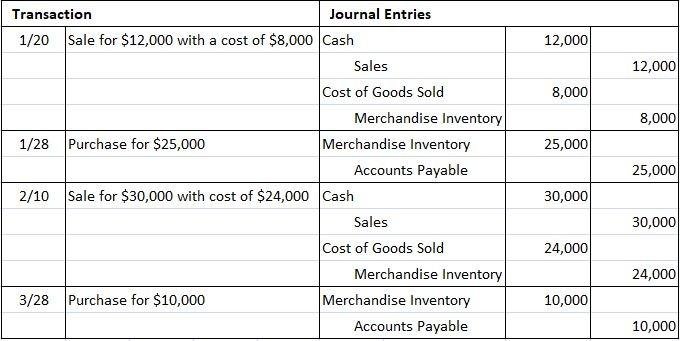In the whimsical realm of business ventures, where dreams take flight and ambitions soar, there exists an overlooked secret to financial triumph that lies dormant in the deepest depths of inventory management. Yes, dear readers, we are talking about the enchanting art of unlocking cash flow through the maximization of inventory turnover. Prepare to embark on a journey unlike any other, as we unravel the mystical veil shrouding this vital pillar of financial success. With a touch of creativity and a neutral tone, we invite you to step into a world where numbers dance and dollars multiply. Welcome, avid readers, to a captivating exploration of the key to unlocking prosperity through the efficient utilization of inventory turnover.
Table of Contents
- Unleashing the Potential: Understanding the Importance of Inventory Turnover
- Streamlining Operations: Strategies to Accelerate Inventory Turnover and Boost Cash Flow
- Effective Techniques: Enhancing Inventory Management for Financial Prosperity
- Unlocking Success: Key Recommendations to Maximize Inventory Turnover and Unlock Cash Flow
- Q&A
- Insights and Conclusions

Unleashing the Potential: Understanding the Importance of Inventory Turnover
In the fast-paced world of business, unlocking cash flow and maximizing financial success is a goal that every entrepreneur aspires to achieve. One essential aspect that significantly contributes to accomplishing this objective is inventory turnover. By understanding the importance of inventory turnover, businesses can effectively manage their stock and ensure a steady stream of revenue.
The concept of inventory turnover refers to how quickly a company sells its inventory and replaces it with fresh stock. A high inventory turnover ratio indicates that a company is selling its products quickly and efficiently, whereas a low ratio suggests that inventory is sitting on the shelves for an extended period. Here’s why understanding and optimizing inventory turnover is key to unlocking cash flow:
1. Improved cash flow: When inventory turnover is high, businesses can convert their inventory into cash more rapidly. This increased cash flow allows for more operational flexibility, such as investing in growth opportunities or paying off debts.
2. Reduced carrying costs: Carrying costs, including storage, insurance, and obsolescence, can eat into a company’s profit margin. By actively managing inventory turnover, businesses can minimize these costs. For instance, a high turnover rate reduces storage expenses, while avoiding stockpiling outdated products prevents obsolescence.
3. Capital efficiency: Maximizing inventory turnover means that less capital is tied up in inventory. This frees up funds to be allocated elsewhere in the business, such as investing in marketing campaigns, improving infrastructure, or hiring additional staff.
Real-world examples showcase the significance of inventory turnover in financial success. Take the fast fashion industry, for instance. Brands like Zara or H&M have established themselves as industry leaders by constantly refreshing their inventory and adapting to new fashion trends. Their high inventory turnover not only ensures consistent revenue but also allows them to respond quickly to customer demands and remain ahead of the competition.
In conclusion, inventory turnover plays a vital role in unlocking cash flow and maximizing financial success for businesses. By actively managing and optimizing this aspect, entrepreneurs can enjoy improved cash flow, reduced carrying costs, and enhanced capital efficiency. So, take the time to understand and analyze your inventory turnover ratio, as it can pave the way for long-term financial growth and prosperity.
Streamlining Operations: Strategies to Accelerate Inventory Turnover and Boost Cash Flow
Efficient inventory turnover is the key to unlocking financial success for any business. To maximize your cash flow and drive profitability, it is crucial to implement strategies that streamline your operations. By managing your inventory effectively, you can free up valuable capital and minimize excess stock that can tie up funds. Here are some practical strategies to help you accelerate inventory turnover and boost your cash flow:
- 1. Conduct regular demand forecasting: Understanding customer demand patterns allows you to align your inventory levels accordingly. Analyze historical data, market trends, and external factors to anticipate future demands and optimize your stock levels.
- 2. Optimize inventory management systems: Implement a robust inventory management system to accurately track stock levels, reduce errors, and streamline order fulfillment. Utilize barcode scanning, automated alerts for low stock, and real-time reporting to gain better control over your inventory.
- 3. Embrace just-in-time (JIT) inventory: The JIT approach minimizes excess inventory by receiving goods only when they are needed. By reducing storage and holding costs, you can improve cash flow and respond more effectively to market demands.
- 4. Nurture supplier relationships: Building strong relationships with reliable suppliers can help you negotiate better terms, such as favorable payment terms or volume discounts. Collaborate closely with your suppliers to ensure timely deliveries and minimize any disruptions that could impact your inventory turnover.
By implementing these strategies, you can streamline your operations and achieve a healthy inventory turnover ratio, bolstering your cash flow and paving the way for sustained financial success. Remember, optimizing inventory turnover is an ongoing process that requires continuous analysis and adaptation to changing market conditions. Stay proactive and embrace innovative solutions to maintain a competitive edge in today’s dynamic business environment.

Effective Techniques: Enhancing Inventory Management for Financial Prosperity
In today’s competitive business landscape, efficient inventory management is a vital aspect that can significantly impact the financial success of a company. Properly managing inventory not only ensures smoother operations but also maximizes cash flow and drives profitability. Here, we uncover proven techniques that can help you enhance your inventory management practices, unleashing the true potential of your business.
1. Implement Automated Inventory Management Systems: Embracing technology can revolutionize your inventory management process. By utilizing advanced inventory management software, you can automate tasks such as stock tracking, reordering, and forecast analysis. This not only reduces manual errors but also provides real-time insights, enabling you to make data-driven decisions for optimal inventory levels.
2. Adopt Just-in-Time (JIT) Inventory Strategy: Employing the JIT inventory strategy allows you to minimize excess inventory and avoid unnecessary holding costs. With this strategy, you receive goods from suppliers only when they are needed for production or sale. By synchronizing inventory levels with customer demand, you can significantly improve cash flow, reduce storage expenses, and ensure a lean and agile supply chain.

Unlocking Success: Key Recommendations to Maximize Inventory Turnover and Unlock Cash Flow
When it comes to achieving financial success, maximizing inventory turnover is a vital element that cannot be overlooked. It not only allows businesses to optimize their cash flow, but also ensures that valuable resources are efficiently utilized. To unlock the full potential of your inventory turnover and drive positive financial outcomes, here are some key recommendations:
- Regularly analyze and monitor inventory: Conducting a thorough analysis of your inventory on a regular basis is crucial. By understanding which products are selling well and which ones are lagging, you can make informed decisions regarding stock levels. Invest in inventory management software to efficiently track and monitor your inventory, enabling you to identify slow-moving items and take appropriate action.
- Implement just-in-time (JIT) inventory management: Adopting a JIT inventory management system can significantly improve your inventory turnover. Instead of stocking excessive quantities of products, JIT focuses on maintaining minimal stock levels by delivering goods precisely when needed. By reducing holding costs and minimizing the chances of products becoming outdated, you can free up valuable cash flow.
- Promote cross-department collaboration: Encourage collaboration between your sales, marketing, and supply chain teams to ensure optimal inventory turnover. By aligning sales forecasts with production and procurement schedules, you can avoid overstocking or understocking situations. Additionally, effective communication among teams can help identify potential bottlenecks in the supply chain, ensuring smooth operations and continuous cash flow.
- Offer discounts and promotions: Consider implementing attractive discounts or promotions to stimulate demand for slow-moving products. By offering special deals, bundle packages, or limited-time offers, you can incentivize customers to purchase these items, thereby reducing excess inventory and increasing turnover.
- Optimize your supplier relationships: Establishing strong partnerships with reliable suppliers can have a significant impact on your inventory turnover and cash flow. Negotiate favorable payment terms with your suppliers to free up cash and improve working capital. Additionally, collaborate with suppliers to forecast demand accurately, ensuring that you have the right products available at the right time.
- Stay vigilant against stock obsolescence: Regularly review your inventory to identify obsolete or slow-moving items that may be tying up your cash. Implement strategies to liquidate or dispose of such stock effectively. Consider discounting prices, running clearance sales, or exploring partnerships with liquidation companies to minimize losses and unlock cash flow.
Unlocking success and achieving optimal inventory turnover is essential for financial success. By adopting these key recommendations, businesses can unlock their cash flow potential and maximize their overall profitability.
Q&A
Q: What is the key to unlocking cash flow for financial success?
A: By maximizing inventory turnover, businesses can efficiently generate cash flow and achieve financial success.
Q: How can inventory turnover be improved?
A: Inventory turnover can be improved by implementing effective inventory management techniques such as just-in-time inventory, demand forecasting, and automated reordering systems.
Q: Why is maximizing inventory turnover important?
A: Maximizing inventory turnover ensures that a business is not tying up excessive amounts of capital in inventory, allowing for better cash flow management and increased profitability.
Q: What are the benefits of increasing inventory turnover?
A: Increasing inventory turnover leads to reduced holding costs, minimized risks of inventory obsolescence, improved customer satisfaction through faster order fulfillment, and increased opportunities for revenue generation.
Q: How can businesses determine their optimal inventory turnover rate?
A: Businesses can determine their optimal inventory turnover rate by evaluating industry benchmarks, analyzing historical sales data, and developing demand-driven strategies tailored to their specific products and customer base.
Q: What are some potential challenges in maximizing inventory turnover?
A: Challenges in maximizing inventory turnover include maintaining accurate demand forecasting, managing supplier relationships and lead times, preventing stockouts, and effectively controlling inventory carrying costs.
Q: Can technology help improve inventory turnover?
A: Yes, technology can greatly assist in improving inventory turnover through the use of inventory management software, data analytics, and automation tools, which streamline processes and enhance real-time decision-making.
Q: How can businesses reduce excess inventory and avoid overstocking?
A: Businesses can reduce excess inventory and avoid overstocking by periodically conducting inventory audits, optimizing production schedules, offering promotional discounts, collaborating closely with suppliers, and implementing effective sales and marketing strategies.
Q: Is inventory turnover solely dependent on sales volume?
A: No, inventory turnover is influenced by various factors including sales volume, lead times, procurement processes, seasonal demand fluctuations, and market trends. It requires a holistic approach to achieve optimal results.
Q: What should businesses keep in mind while maximizing inventory turnover?
A: While maximizing inventory turnover, businesses should strike a balance between minimizing inventory costs and ensuring sufficient stock levels to meet customer demand. Regular analysis and strategic adjustments are crucial to achieving financial success.
Insights and Conclusions
As we bring this insightful journey to a close, it is evident that unlocking cash flow and maximizing inventory turnover are indispensable steps towards achieving unparalleled financial success. Through our exploration of various strategies and tactics, we have discovered the power of efficient inventory management in fueling business growth and ensuring a steady stream of revenue.
By adopting a proactive and diligent approach, enterprises can revolutionize their financial landscape, transcending limitations and harnessing the full potential of their inventory. From implementing smart forecasting techniques to embracing innovative technology, the options are boundless and the rewards immeasurable.
As we bid farewell, let us remember that the key to thriving in today’s ever-evolving marketplace lies in our ability to strike a delicate balance. Balancing supply and demand, balancing the costs associated with carrying inventory, and balancing the need for innovation with the need for sustainability.
Armed with the knowledge and insights shared within these pages, you now possess the tools to navigate the treacherous waters of inventory turnover, transforming it from a mere financial metric into a catalyst for prosperity. Embrace the process, seize the opportunities, and watch as your organization soars towards unparalleled financial success.
In the end, it is the collective efforts of each business, big or small, that shape the economies of tomorrow. By optimizing inventory turnover, we not only secure our own financial stability but contribute to the resilience and growth of our global community.
So, dear reader, go forth with a renewed sense of purpose and be the catalyst for change. Unlock the potential within your business, maximize inventory turnover, and let financial success flow unbound.

